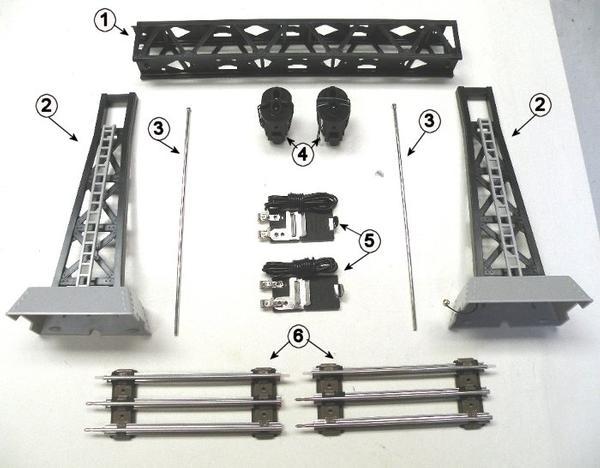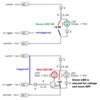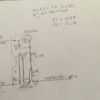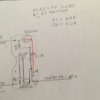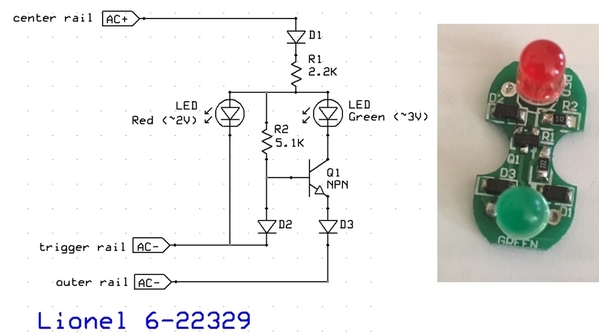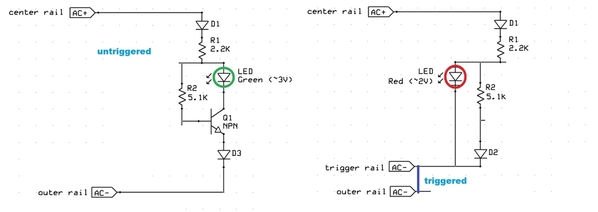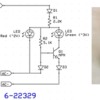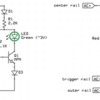Given the scant number of components, I'm guessing it's a "starve the green" circuit.
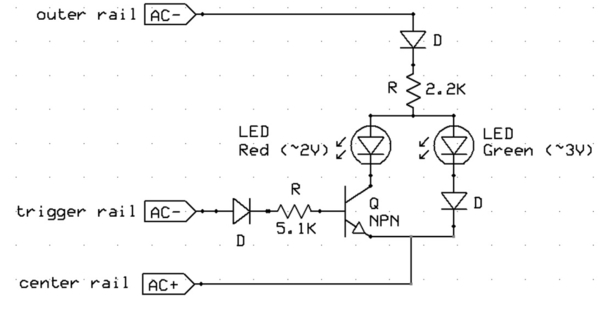
The "trick" is a Red LED turns on at ~2V while a Green LED turns on at ~3V.
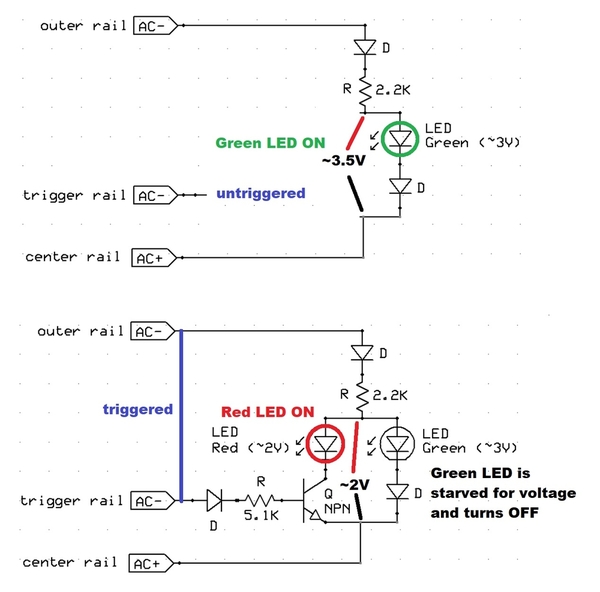
When untriggered, the transistor is "off" and hence the circuit is as shown on top. The Green LED is on. The current is half-wave rectified or pulsing 60 times per second.
When triggered, the transistor is "on" and the Red LED is on. The current is pulsing 60 times per second. The voltage across the Red LED only reaches 2V...so the Green LED is starved for voltage and turns OFF. The Green LED never sees the ~3V it needs to turn on. The added diode below the Green LED makes the Green voltage higher by the diode drop. This separates the Red and Green voltage a bit more which makes a more distinct on-off transition.
As there are no capacitors this does not have "flicker" rejection from dirty wheel/tracks when a consist enters or leaves the insulated-rail zone. Lack of capacitors also means the LEDs are pulsing on/off at 60 Hz which younger eyes can see.
If this is indeed what the board is, the extra few volts of a Z-4000 is not your problem. You should be able to use a DC voltmeter to troubleshoot the circuit in a couple minutes. For example, even if the transistor is blown (open circuit), the Green LED should be ON. If the transistor is shorted, the Red LED should be ON (and Green OFF). Any diode that is "on" should have a DC measured voltage of 1/4V or so; it's only on half the time so you don't read the 1/2V to 3/4V one normally thinks of as a diode voltage.




